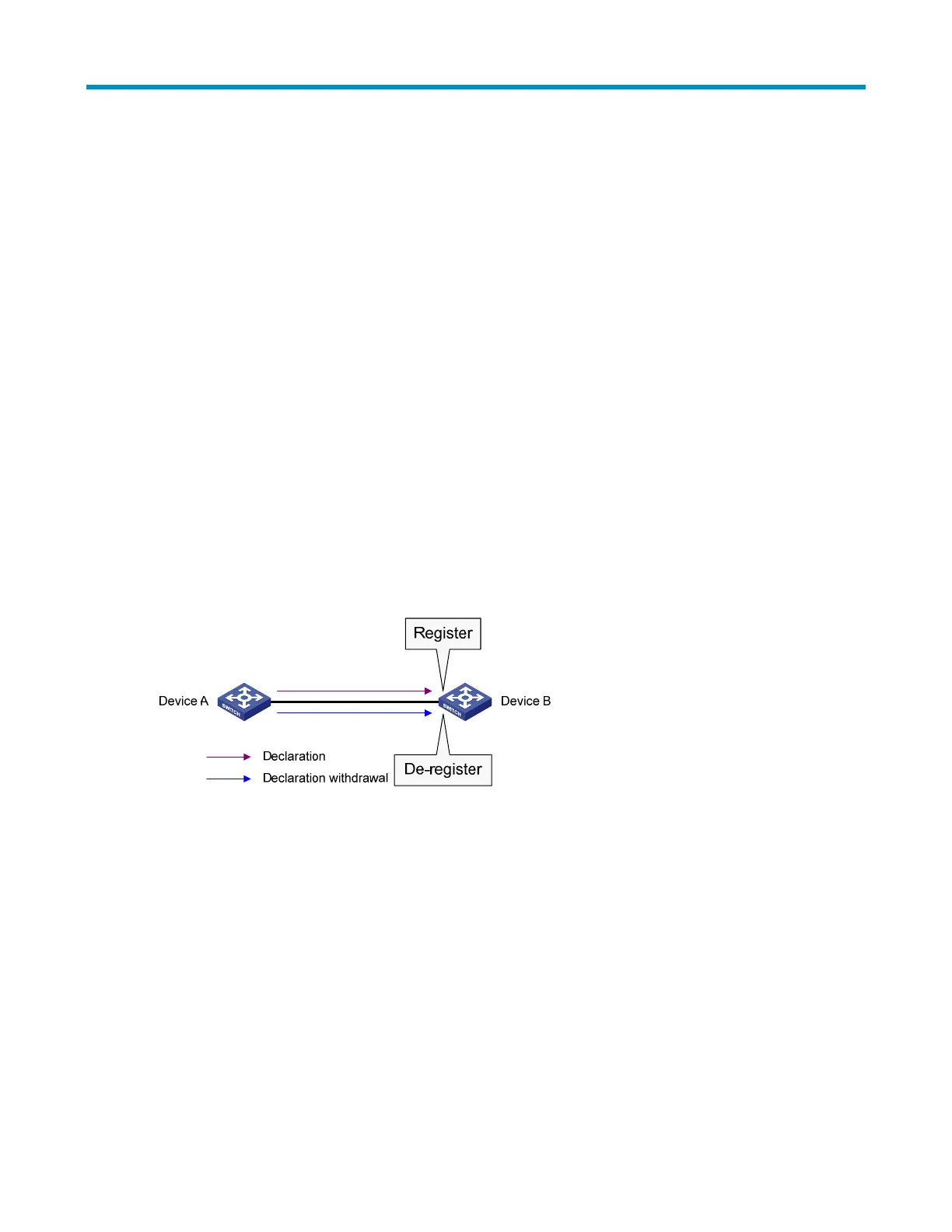149
GVRP configuration
The GARP provides a generic framework for devices in a bridged LAN, such as end stations and switches,
to register and deregister attribute values. The GARP GVRP is a GARP application that registers and
deregisters VLAN attributes. GVRP is based on the operating mechanism of GARP to maintain and
propagate dynamic VLAN registration information for the GVRP devices on the network.
GARP
GARP provides a mechanism that allows participants in a GARP application to distribute, propagate, and
register with other participants in a LAN the attributes specific to the GARP application, such as the VLAN
or multicast address attributes.
How GARP works
Each port that participates in a GARP application (GVRP for example) is a GARP participant.
Through the GARP mechanism, the attribute information of GARP participants is rapidly propagated
across the entire LAN. As shown in Figure 48, a G
ARP participant registers and deregisters its attribute
information with other GARP participants by sending and withdrawing declarations, and registers and
deregisters the attribute information of other participants according to the declarations and withdrawals it
receives.
Figure 48 How GARP works
For example, GVRP registers and deregisters VLAN attributes in the following cases.
• When a port receives a declaration for a VLAN attribute, it registers the VLAN attribute carried in
the declaration and joins the VLAN.
• When a port receives a withdrawal for a VLAN attribute, it deregisters the VLAN attribute carried in
the withdrawal and leaves the VLAN.
GARP messages
A GARP participant exchanges information with other GARP participants by sending GARP messages,
which are Join, Leave, and LeaveAll. These messages work together to ensure the registration and de-
registration of attribute information. As a GARP application, GVRP also uses GARP messages for
information exchange.
1. Join messages

